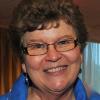I love Advent. It's such a hopeful and consoling season for those who long to see God's values fully realized "on Earth as in heaven," as Jesus prayed.
This is the season of the prophet Isaiah, whose proclamations permeate our liturgies and whose writings inspired both Jesus and St. Paul. We renew our belief in a God who brings "glad tidings to the poor, liberty to captives and makes justice and praise spring up before all the nations" (Isaiah 61).
Above all, we bask in a very special brand of prophetic hope that stretches back over 2,500 years.
Recently, I was delighted to discover that female prophets and scribes helped shape the Isaiah tradition so important to early Christianity. Episcopal priest Wilda Gafney's book Daughters of Miriam uncovers the all-but-unknown fact that in ancient Israel, prophetic schools and scribal guilds were composed of both women and men. These gender-balanced groups created the prophetic writings attributed to Isaiah and many other prophetic figures. Gafney's doctoral study of ancient prophecy and its technical vocabulary is credited with beginning a new chapter in gender and biblical studies.
Since the New Testament cites or alludes to the Book of Isaiah more than 300 times, it is not an exaggeration to say that the foundational motifs of Christianity emerge from the prophetic ministries of both women and men.
Read and comment on the full story at National Catholic Reporter.

